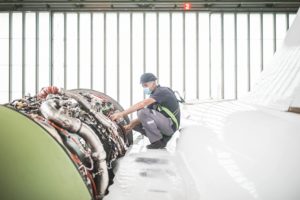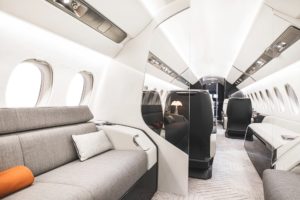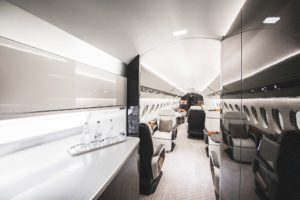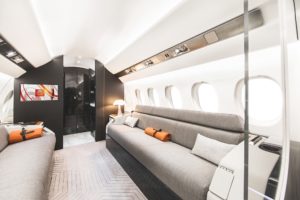FALCON 6X COMPLETES FIRST FLIGHT
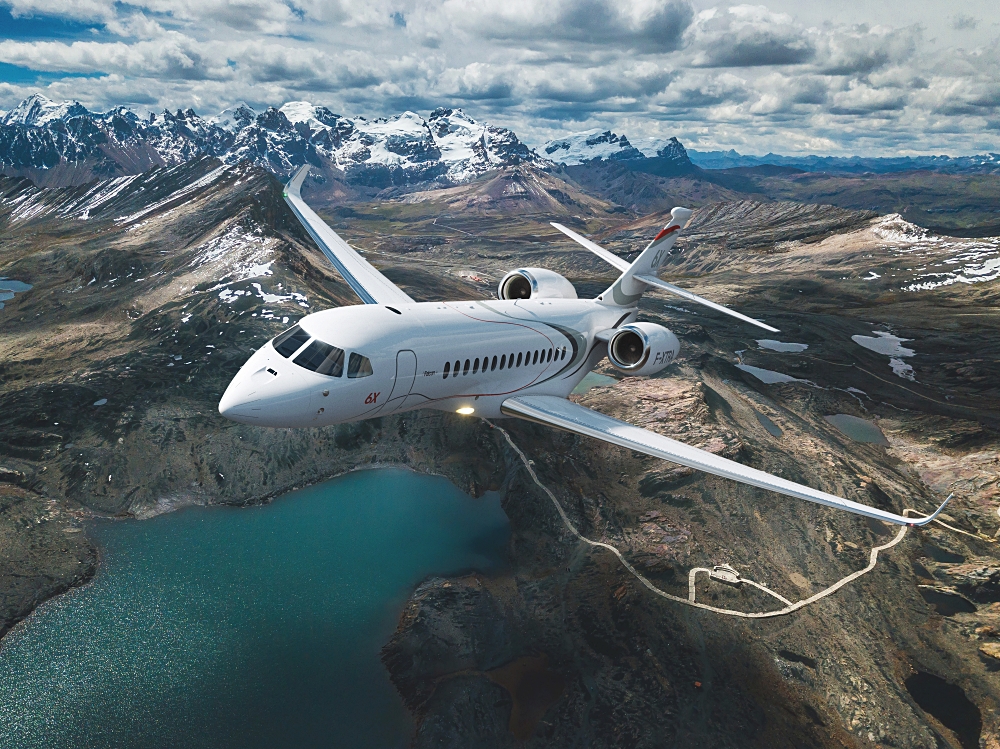
Dassault Aviation’s Falcon 6X has successfully completed its first flight as planned
“The 6X is the latest example of the fusion of military know-how and business aviation expertise for which Dassault Aviation is so respected,” said Dassault Aviation Chairman/CEO Eric Trappier. “The new capabilities in efficiency, performance and safety it offers will set a new benchmark in the long-range segment. This airplane will also set a new standard in terms of cabin comfort and spaciousness, as demanded by our customers.”
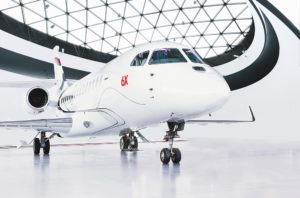
With test pilots Bruno Ferry and Fabrice Valette at its controls, aircraft 6X s/n 01 lifted off from Dassault Aviation’s Mérignac plant near Bordeaux at 2:45 PM. This about two-hour-thirty maiden flight was executed per the test plan, with pilots testing aircraft handling qualities, engine response and the behavior of key aircraft systems. The aircraft topped out at 40,000 ft and reached a speed of M0.8 before returning to its base.
“The 6X flew exactly as predicted by our models. From a pilot’s perspective, it flies like a Falcon, which is to say with perfect precise handling in all phases of flight,” said Ferry. “Fabrice and I are honored to have made the latest first flight in another fantastic Falcon.”
Serial number 01’s next flight will combine test activities with a hop to Istres, near Marseilles, where the Dassault flight test center is located and the bulk of the testing program will take place. Falcon 6X s/n 02 and 03 are scheduled to take to the air in the coming months.
About the 6X
The 6X will set a new industry benchmark for cabin comfort, long-range performance and flying efficiency, with the largest cabin cross section of any purpose-built business jet. The new twinjet is equipped with the latest innovative flying technologies, including a next-generation Digital Flight Control System (DFCS). The DFCS provides better manoeuvrability and aircraft protection on primary and secondary flight controls and commands all flight control surfaces, including slats and flaps, with each surface multifunctional for peak performance. The DFCS also integrates nose-wheel steering for safer runway handling in strong crosswinds or on wet runways.
Dassault’s Falcon 6X is the first business aircraft to feature new ‘flaperons’, active high-speed deflection control surfaces that can act as both flaps (increasing lift) and ailerons (roll control). Integrated into the DFCS, the flaperons are especially beneficial during approaches with a steep descent profile, increasing drag while maintaining a high-lift coefficient.
The 6X’s 5,500 nautical mile range capability allows it to connect far-flung routes such as Paris to Tokyo or Los Angeles to Moscow.
Award-winning interior
The cabin is the highest and widest of any purpose-built business jet. It is 1.98 metres high, and 2.58 metres wide, giving a greater feeling of space. Interior layout options include a large entryway, a crew rest area, and a spacious rear lounge, offering greater privacy, especially on long overnight flights the aircraft is capable of.
It is 12.30 metres in length, offering 12-16 passengers individual seating in three separate lounge areas, with an interior design that is garnering awards and praise before it has even rolled out, having recently won the prestigious International Yacht & Aviation Award for interior design.
The Dassault sensory design approach uses air, light and sound in innovative ways to maximise the health and wellbeing of the passengers. This approach played a key role in selecting materials, textures and finishes, laying out furniture and furnishings, defining interior lighting and colour schemes and designing cabin contours of the new 6X.
The cabin’s flowing uninterrupted lines, innovative furniture design, flush surfaces, and recessed technology provide a cosy, clutter-free interior, designed to enhance the feeling of spaciousness and encourage productivity and relaxation during the long intercontinental trips this aircraft can undertake.
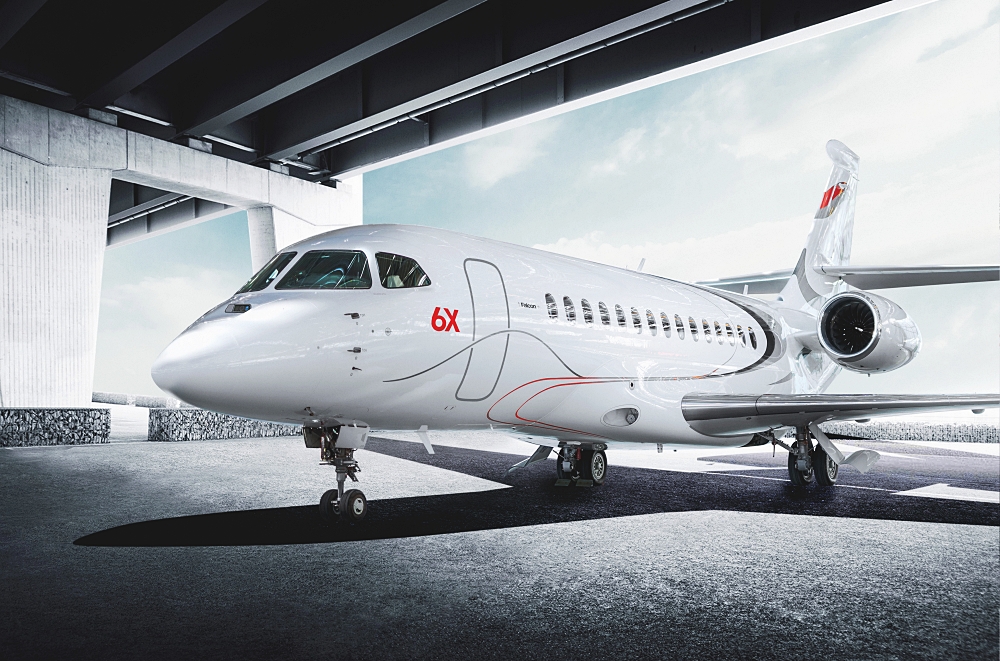
Upholstered areas throughout the cabin are covered with micro-perforated fabrics, woven textiles and 3D fabrics designed to offer protection from microbes and absorb sound. Materials and finishing are optimised to absorb or reflect light in a way that ensures a soothing, pleasant ride. Smart-control mood lighting varies colour patterns in accordance with the type of activity, time of day and season.
Passengers sit in an ergonomic ‘cocoon’ where all electronic functions are within easy reach. Recessed controls are movement-sensitive, lighting up when a hand is near and dimming when not required.
The cabin has 30 extra-large windows with nearly 5,000 square inches of glass – more than any other aircraft in its class — filling the cabin with natural light, and providing extensive views of the ground below. An overhead skylight, the first in business aviation, illuminates the normally dim galley area.

Cabin air is refreshed continuously for an environment that is 10 times cleaner than today’s most advanced office buildings and “cabin altitude” pressurisation is maintained at a comfortable 1,189 metres, (3,900 feet), when cruising at 12,497 metres (41,000 feet).
Passengers would rather lose an engine than lose their connection to the world, and the 6X cabin comes with high-speed connectivity system solution ensuring seamless in-flight communications and high-speed access to Internet. Connectivity service options include Ka-Band network that allows even faster and more consistent data speed. The cabin will also come equipped with new in-flight entertainment and communications network technology designed to distribute crisp, high-definition audio and video content throughout the cabin. Passengers have total command of cabin functions in an easy-to-use mobile app or cabin interface.

Engine programme on target
The aircraft’s advanced Pratt & Whitney Canada PW812D engine completed an initial airborne test campaign earlier this year aboard Pratt & Whitney’s Boeing 747 testbed aircraft. The PW812D has accumulated over 200 hours in the air and more than 1,600 hours on the ground. It has also completed initial certification tests, including bird strike, ice ingestion, and blade-off tests.
The PW1200G core engine shared by the PW812D has accumulated more than 16,000 hours of running time. The PW800 series exceeds ICAO standards for NOx emissions by a double-digit margin and generates ultra-low levels of unburned hydrocarbons and smoke. The PW812D will meet future CO2 regulations and achieve Stage 4 noise requirements with a significant margin.
The Dassault flight test team is currently coordinating with EASA and the FAA to finalise the flight test and validation programme.


